Infrared measurements
First of all, I contrasted the infrared measurements with the thermal images once again, so that we also have a good visual comparison. Because what the beams will show very impressively afterwards, you can actually already see by coloring on the boards. Each time I connected the graphics card directly to the chiller, the Power Target increased to the maximum 380 watts, the core clock by 200 MHz and the voltage to the adjustable maximum.

Always measured with Witcher 3 on maximum detail at 3840 x 2160 pixels (Ultra-HD). The control measurement always showed approx. 378 to 379 watts over the measured 30 minutes for the graphics card alone, the water temperature was constant 20 °C and the room temperature was 22 °C.
Individual results
In a direct comparison of what can be measured below the base, Aqua Computer's Kryographics Next performs best, followed by The Watercool Heatkiller IV and the rest. This is where the Phanteks Glacier comes in last with almost 14% lower cooling performance. If you are interested in the highest boost step, these temperatures are one of the most important for you.
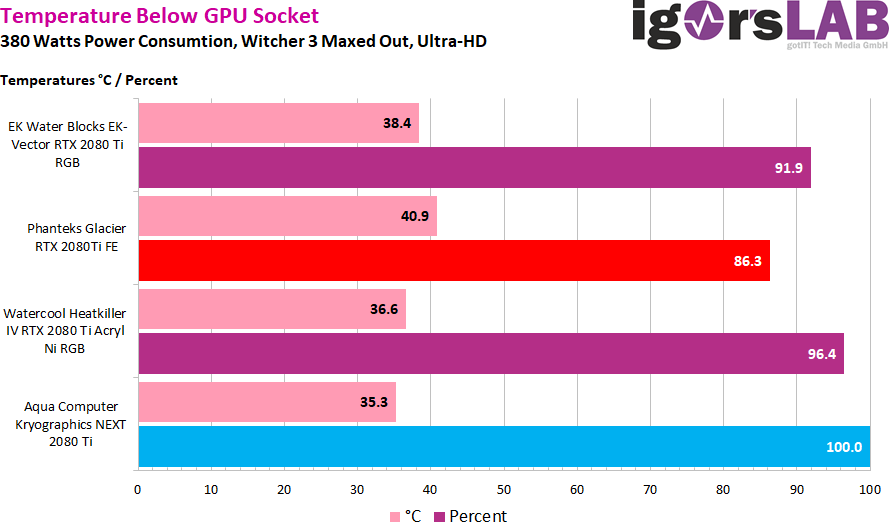
These memory modules are most critical when cooling, because they lie exactly between the hot voltage converters and the GPU socket, especially since the high currents that flow in the copper webs below to the GPU and additionally heat up these tracks. The result is quite the match for the GPU socket, except that the distances to the best cooler have increased significantly once again. One notices very well that here instead of the pads the thermal paste guarantees better cooling.
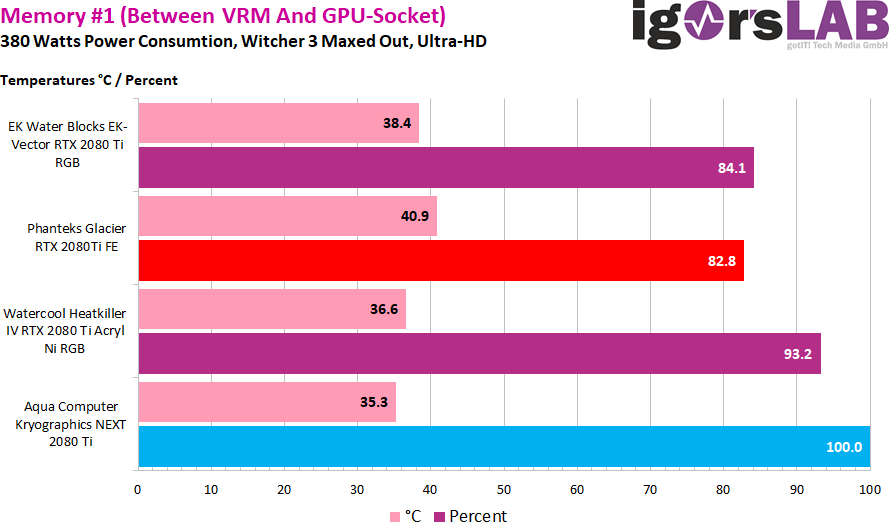
The memory at the top of the map is certainly not so critical in terms of temperature, but it also says a lot about the layout of the water flow and the cooling qualities of the copper block. The products of Phanteks and EK exchange places in the backfield, the rest remains as usual.
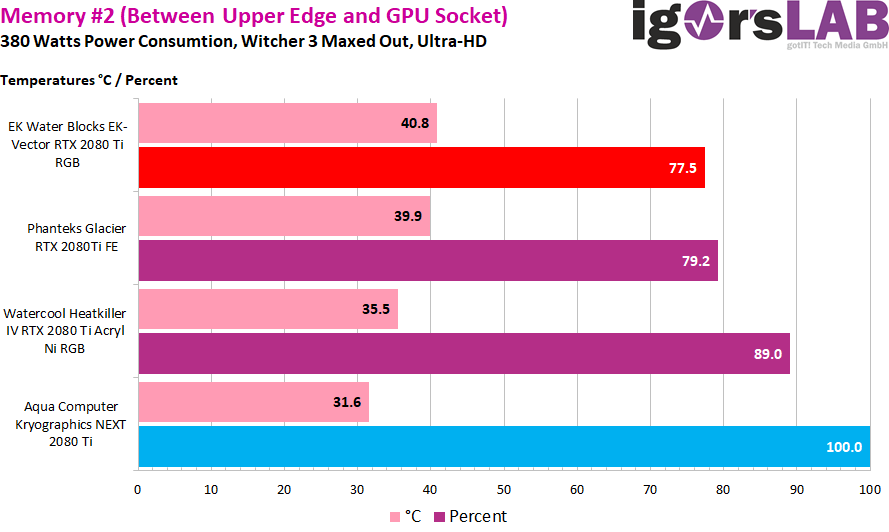
The memory below the GPU socket is also not critical and all test objects can easily do so below 40 °C. The Vector from EK is at the bottom of the list, while the Phanteks Glacier and the Heatkiller IV are virtually the same. The winner is also the Kryographics Next from Aqua Computer.
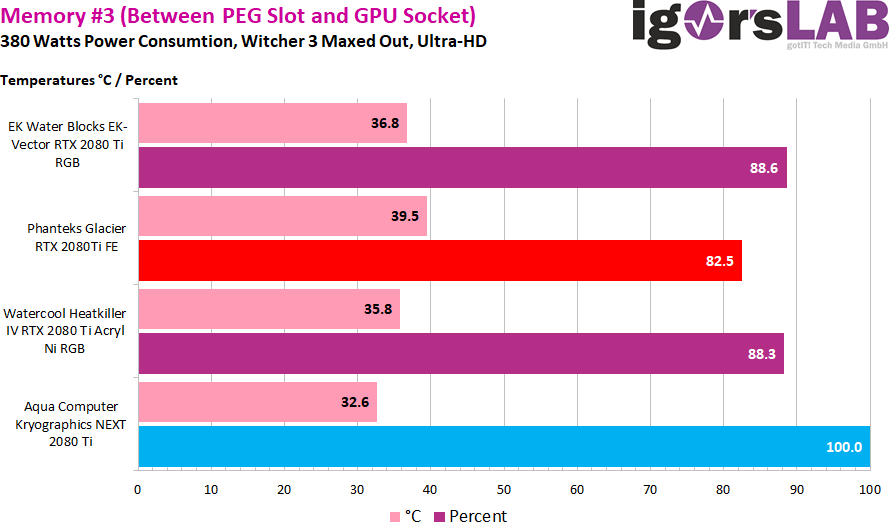
The larger of the two voltage converter blocks is the most important in terms of cooling and interestingly, the Phanteks Glacier wins here, just ahead of Kryographics Next. By the way, it is also the only discipline that the water block of Aqua Computer does not win.
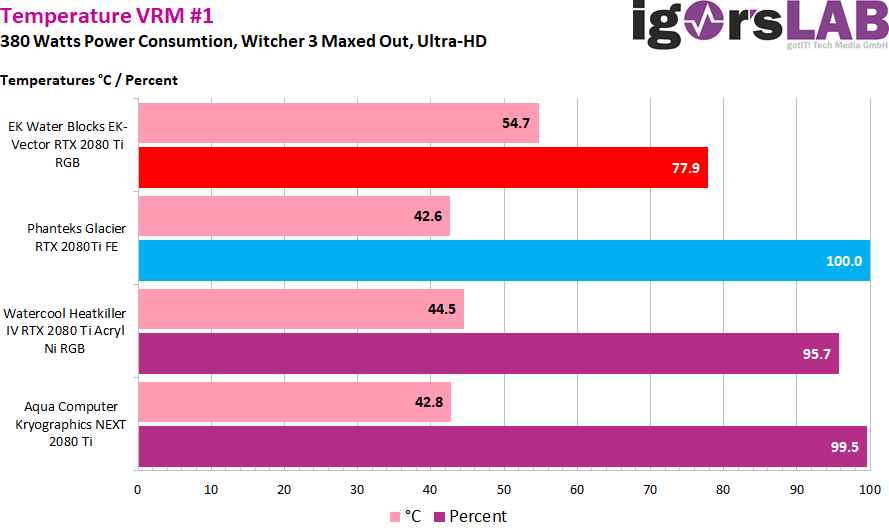
The smaller block of voltage converters between GPU socket and slot panel is the small post, where again the old order applies on the winner's rostrum, where especially two coolers can stand out.
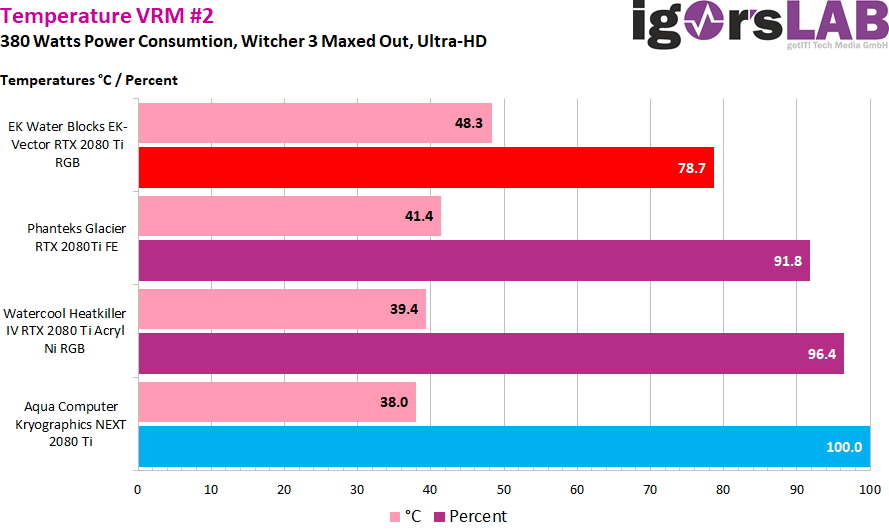
Summary and conclusion
The bottom line is that the most expensive cooler in the test field wins very thinly over the cheapest. In places three and four, the Phanteks Glacier can also overtake the Vector from EKWB on the finish line. The last two coolers would not be bad now, but the two better coolers would simply be a bit more performant. If you really want to have the best in the hunt for the last MHz and the last degree Celsius, you have to wait for the product of Aqua Computer and can even save a decent amount.
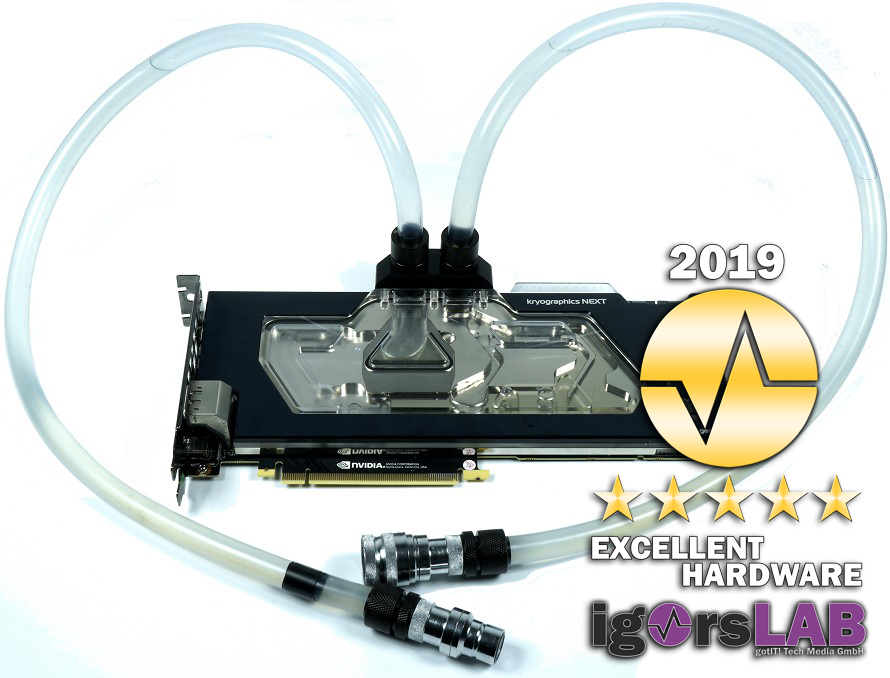
Watercool's Heatkiller isn't really worse, but it's much cheaper. But here, too, patience will have to be brought. The coolers from Phanteks and EK are at least better available. This, too, can of course be an important criterion if we are in a hurry. And if you want to see me again and hear: this time there is the tube movie only AFTER the text. Look!














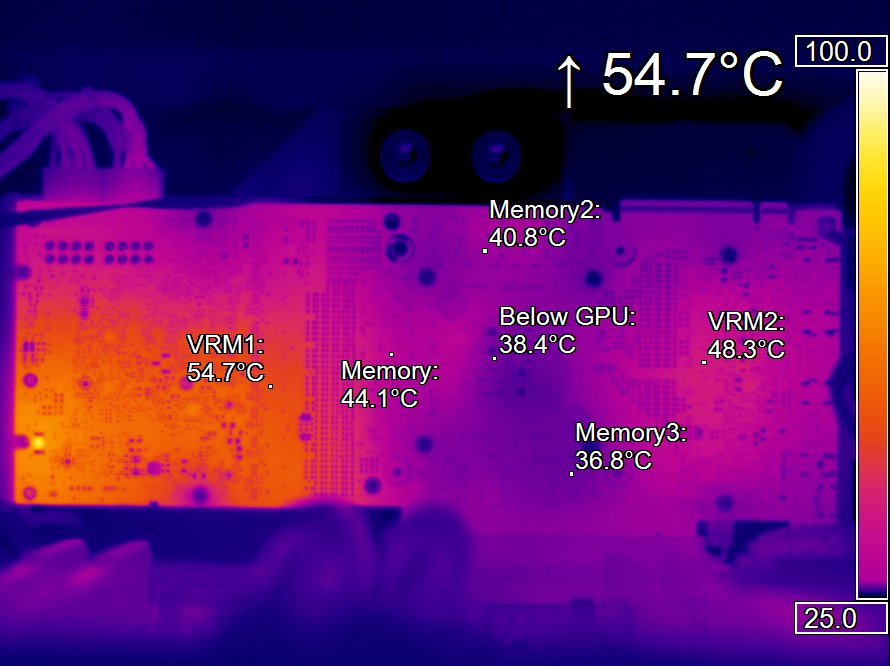
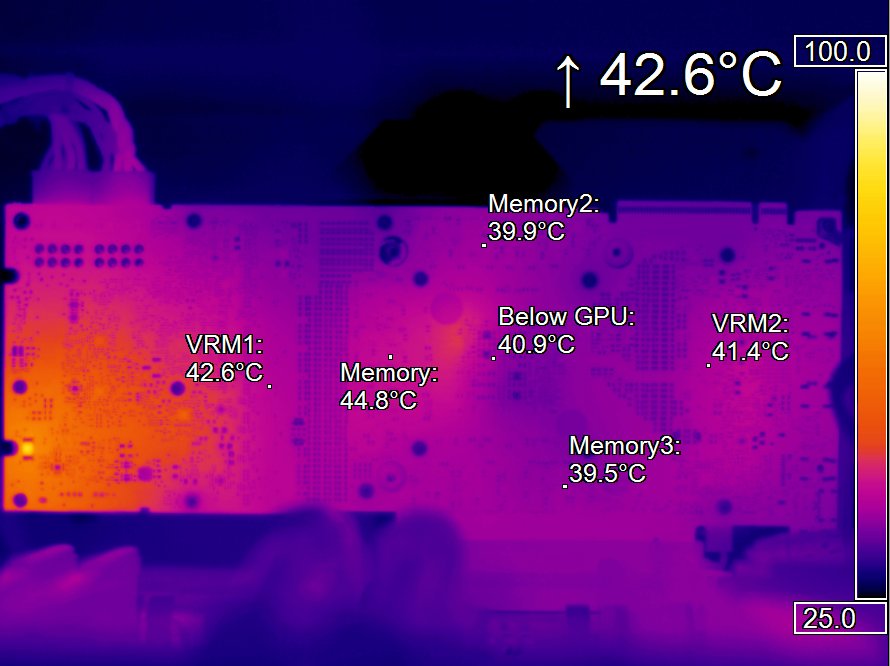
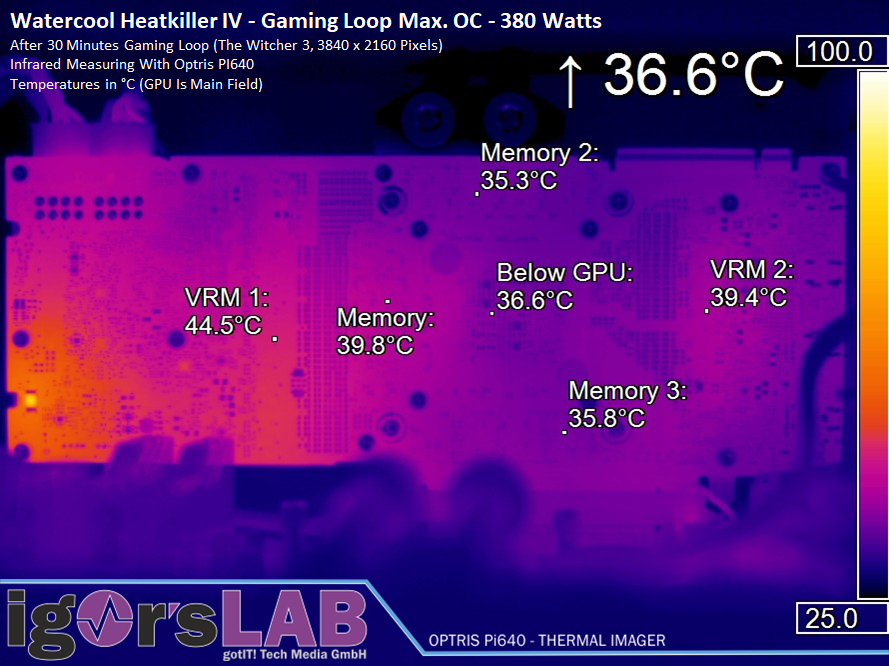
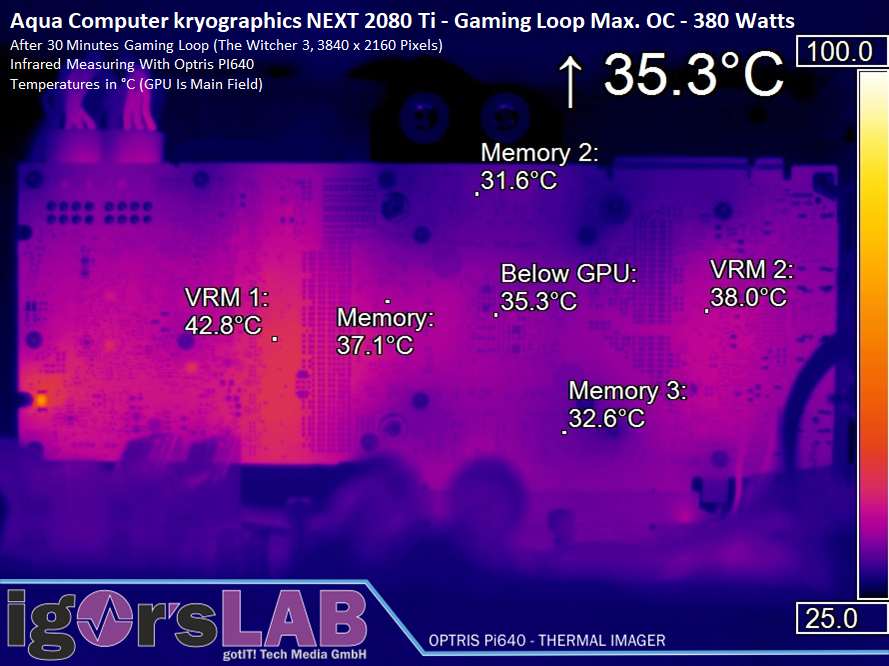

















Kommentieren